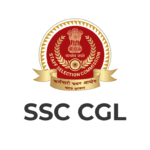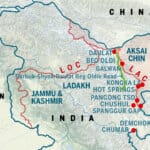Before 1947, India was divided into two main groups: the princely states, which were ruled by Indian princes under a subsidiary alliance policy, and British India, which was made up of 11 provinces. Although the two organizations merged to form the Indian Union, many of the legacy British India systems are still in use today. Many laws and regulations passed before Indian Independence can be linked to the historical foundations and evolution of the Indian Constitution.
Indian Administrative System
In the parliament-based democracy of India, the executive is answerable to the legislature. The Loksabha and Rajyasabha are the two houses of the Parliament. Additionally, there are separate executive and legislative branches at the Center and States because it is a federal form of government. We also have local government levels that are self-governing. The British government left behind all of these systems. Let’s look at the Indian Constitution’s historical background and how it has changed over time.

The Regulating Act of 1773
- The British Parliament took the first step toward controlling and regulating the affairs of the East India Company in India.
- It designated Fort William, the Governor of Bengal, as the Governor-General of Bengal.
- Warren Hastings was appointed as Bengal’s first governor general.
- The four-member Executive Council of the Governor-General was established. No separate legislative council existed.
- The Governor-General of Bengal became the superior authority to the Governors of Bombay and Madras.
- In 1774, the Supreme Court was established as the Apex Court at Fort William (Calcutta).
- It forbade company employees from engaging in any private business or accepting bribes from locals.
Pitt’s India Act of 1784
- The company’s commercial and political functions were distinguished.
- For commercial functions, there was a Court of Directors, and for political affairs, there was a Board of Control.
- The Governor General’s Council was reduced to three members.
- The British Government was given direct control over Indian affairs.
- The company’s territories in India were referred to as “the British possession in India.“
- In Madras and Bombay, governor’s councils were established.
Charter Act of 1813
- Trade with India was now open to all British subjects, ending the Company’s monopoly.
Charter Act of 1833
- The Governor-General of Bengal was elevated to the position of Governor-General of India.
- Lord William Bentick was the first governor general of India.
- This was the final step toward centralization in British India.
- As a result of the act, the legislative powers of the provinces of Bombay and Madras were revoked.
- The Act effectively ended the East India Company’s commercial activities and transformed it into a purely administrative body.
Charter Act of 1853
- The Governor-General’s Council’s legislative and executive functions were separated.
- The Central Legislative Council had six members. The provisional governments of Madras, Bombay, Bengal, and Agra appointed four of the six members.
- It introduced a system of open competition as the basis for the recruitment of civil servants of the Company (Indian Civil Service opened for all).
Government of India Act of 1858
- In India, the rule of the Company was replaced by the rule of the Crown.
- The Secretary of State for India was to exercise the royal prerogatives of the British Crown.
- He was assisted by the Council of India, which consisted of 15 members.
- He was given complete authority and control over the Indian administration through the Viceroy, who served as his agent.
- The Governor-General was elevated to the position of Viceroy of India.
- Lord Canning served as India’s first Viceroy.
- The Board of Control and the Court of Directors were abolished.
Indian Councils Act of 1861
- It established Indian representation in institutions such as the Viceroy’s executive+legislative council (non-official). Three Indians were appointed to the Legislative Council.
- Legislative councils were established in the Center and provinces.
- It stipulated that the Viceroy’s Executive Council should include some Indians as non-official members when conducting legislative business.
- It gave the portfolio system statutory recognition.
- Decentralisation began with the restoration of legislative powers to the Bombay and Madras provinces.
India Council Act of 1892
- Indirect elections (nomination) were implemented.
- the size of the legislative councils was increased.
- Expanded the functions of the Legislative Councils and gave them the authority to debate the budget and ask questions of the Executive.
Indian Councils Act of 1909
- This Act is also known as the Morley-Minto Reforms.
- Direct elections to legislative councils are the first attempt to include a representative and popular component.
- The Central Legislative Council was renamed the Imperial Legislative Council.
- The number of members of the Central Legislative Council was increased from 16 to 60.
- Accepted the concept of a “separate electorate” to implement a system of communal representation for Muslims.
- For the first time, Indians are represented on the Viceroy’s executive council. (As a law member, Satyendra Prasanna Sinha)
Government of India Act of 1919
- Also known as the Montague-Chelmsford Reforms.
- The boundaries between the Central subjects and the Provincial subjects were drawn.
- Dyarchy, a system of dual governance, was first implemented in the Provincial subjects.
- The provincial subjects were split into two categories under the dyarchy system: transferred and reserved. The Governor was not answerable to the Legislative Council on reserved matters.
- The Act established bicameralism at the center for the first time.
- The Legislative Assembly had 140 members, and the Legislative Council had 60.
- Elections held directly.
- The Act also mandated that three of the Viceroy’s Executive Council members (other than the Commander-in-Chief) be Indians.
- The Public Service Commission was established.
The Government of India Act of 1935
- The Act called for the formation of an All-India Federation with Provinces and Princely States as units, but the envisioned federation never materialized.
- The Act divided the powers of the Centre and the units into three lists: the Federal List, the Provincial List, and the Concurrent List.
- The Federal List for the Centre had 59 items, the Provincial List for the provinces had 54 items, and the Concurrent List for both had 36 items.
- The Governor-General was given residuary powers.
- The Act established “Provincial Autonomy” and ended the Dyarchy in the Provinces.
- It allowed for the implementation of Dyarchy at the Center.
- Bicameralism was implemented in six of the eleven provinces.
- Assam, Bengal, Bombay, Bihar, Madras, and the United Province were the six provinces.
- It was decided to establish a Federal Court.
- The Council of India was abolished.
Indian Independence Act of 1947
- It declared India to be an independent and sovereign state.
- Established responsible governments at both the national and provincial levels.
- The Viceroy of India and the provincial governors were designated as the constitutional (normal heads).
- It gave the Constituent Assembly dual functions (Constituent and Legislative) and established this dominion legislature as a sovereign body.
Other related posts:



